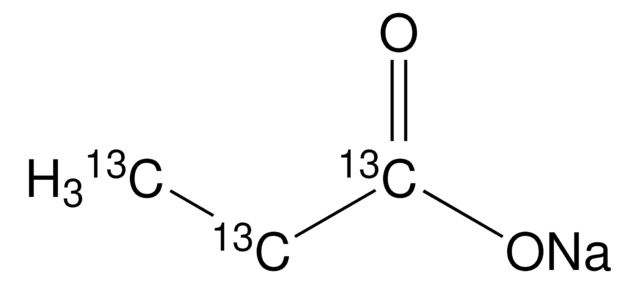488380
Sodium butyrate-13C4
99 atom % 13C
Synonym(s):
Butyric acid-13C4 sodium salt
About This Item
Recommended Products
isotopic purity
99 atom % 13C
form
solid
mp
250-253 °C (lit.)
mass shift
M+4
SMILES string
[Na+].[13CH3][13CH2][13CH2][13C]([O-])=O
InChI
1S/C4H8O2.Na/c1-2-3-4(5)6;/h2-3H2,1H3,(H,5,6);/q;+1/p-1/i1+1,2+1,3+1,4+1;
InChI key
MFBOGIVSZKQAPD-UJNKEPEOSA-M
Packaging
Signal Word
Warning
Hazard Statements
Precautionary Statements
Hazard Classifications
Acute Tox. 4 Oral - Eye Irrit. 2 - Skin Irrit. 2
Storage Class Code
11 - Combustible Solids
WGK
WGK 1
Flash Point(F)
Not applicable
Flash Point(C)
Not applicable
Certificates of Analysis (COA)
Search for Certificates of Analysis (COA) by entering the products Lot/Batch Number. Lot and Batch Numbers can be found on a product’s label following the words ‘Lot’ or ‘Batch’.
Already Own This Product?
Find documentation for the products that you have recently purchased in the Document Library.
Customers Also Viewed
Our team of scientists has experience in all areas of research including Life Science, Material Science, Chemical Synthesis, Chromatography, Analytical and many others.
Contact Technical Service










